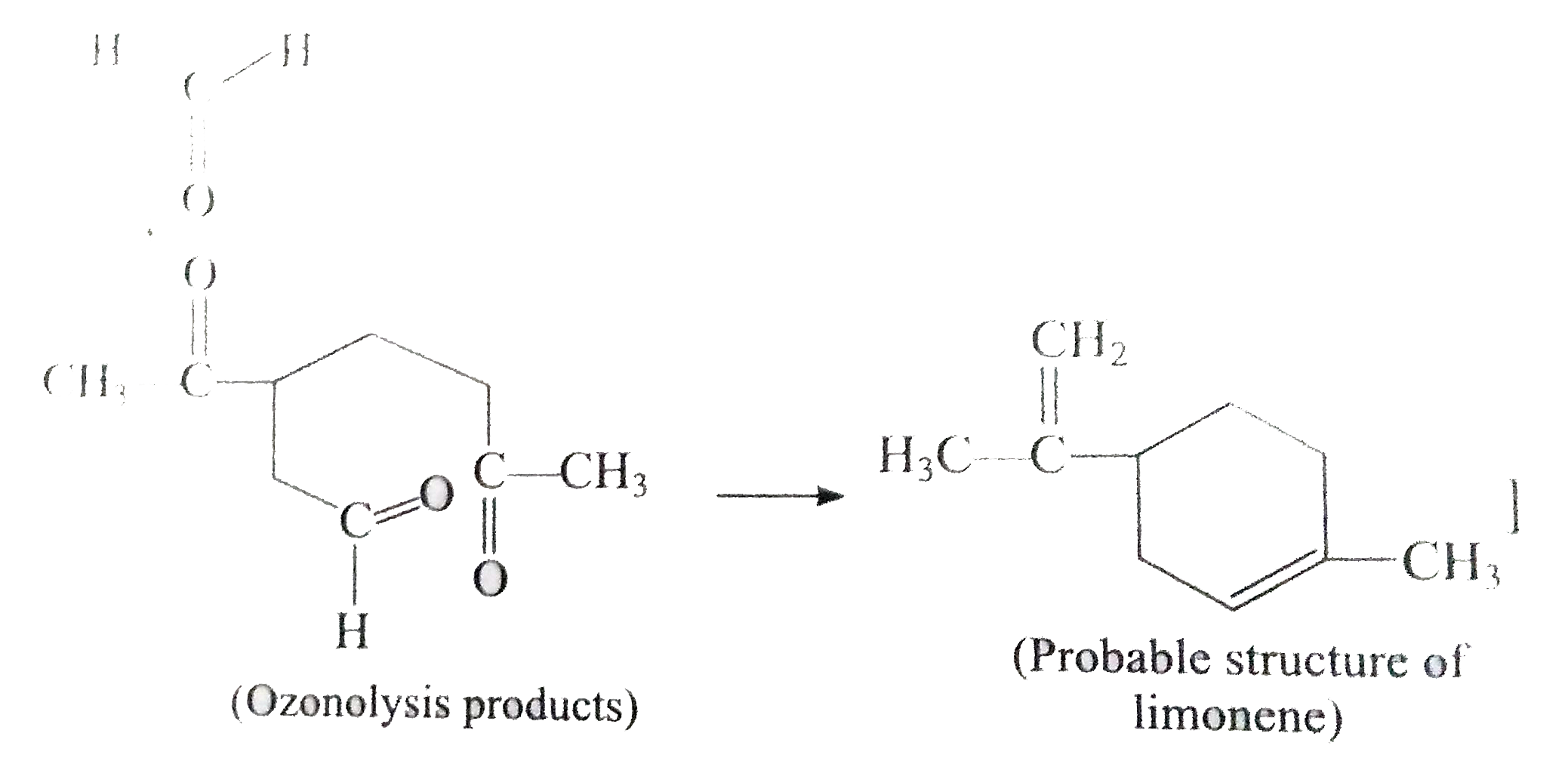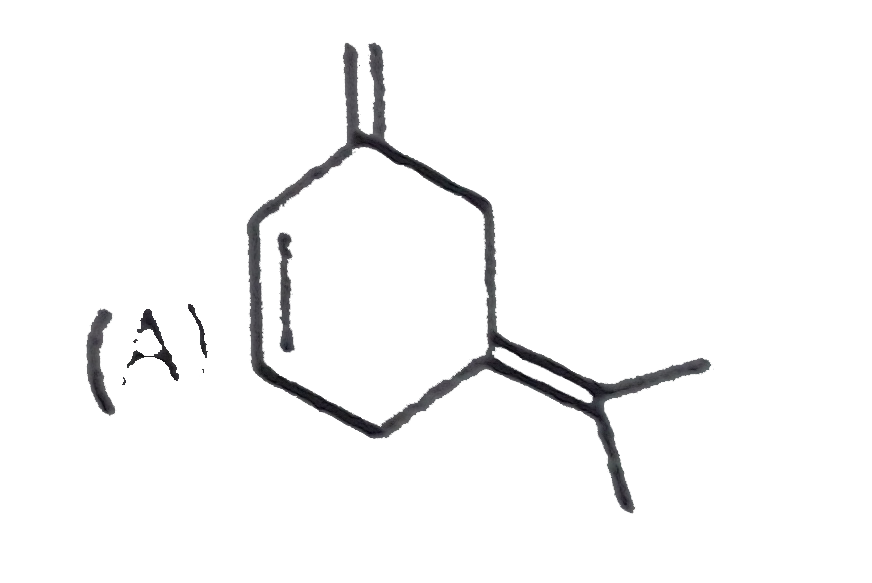Limonene (C10H16) is a naturally occuring hydrocarbon. It absorbs 2 molecules of hydrogen for each molecule during hydrogenation. On ozonolysis followed by zinc and dust and steam hydrolysis, it gives one mole of formaldehyde and one mole of tricarbonyl compound of following structure.

Give probable structure of limonene if it has a six membrane ring.
Compound has a six-membrane ring. Therefore, its structures will be cyclic unsaturated. There will be two double bonds in the limonene because it absorbs two molecules of H2.

Topper's Solved these Questions
- UNSATURATED HYDROCARBONSBOOK - OP TANDONCHAPTER - UNSATURATED HYDROCARBONSEXERCISE - OBJECTIVE QUESTIONS
194 Videos
- UNSATURATED HYDROCARBONSBOOK - OP TANDONCHAPTER - UNSATURATED HYDROCARBONSEXERCISE - (LEVEL B) OBJECTIVE QUESTIONS
29 Videos
- UNSATURATED HYDROCARBONSBOOK - OP TANDONCHAPTER - UNSATURATED HYDROCARBONSEXERCISE - PROBLEMS BASED ON STRUCTURE AND PROPERTIES
10 Videos
- STOICHIOMETRY (CHEMICAL FORMULAE AND EQUATIONS )BOOK - OP TANDONCHAPTER - STOICHIOMETRY (CHEMICAL FORMULAE AND EQUATIONS )EXERCISE - SELF ASSESSMENT
11 Videos
Similar Questions
The moleculear formula of monomer (isoprene) present in natural rubber is C5H8. Its on reductive ozonolysis gives two moles of formaldehyde and one mole of 2-oxoproponal. IUPAC name of the monomer is
View SolutionA hydrocarbon of formula C10H16 absorbs only one mole of H2 upon hydrogenation. On ozonolysis, it yields 1, 6-Cyclodecanedione. What is the structure of the hydrocarbon ?
View Solution
Knowledge Check
An unsaturated hydrocarbon on complete hydrogenation gives 1-isopropl-3-methylcyclohexane, after ozonolysis it gives one mole of formaldehyde, one mole of acetone and one mole of 2,4-Dixoxohexanedial.The possible structure of the hydrocarbon may be
A B
B C
C D
D
An unsaturated hydrocarbon on ozonolysis gives one mole each of methanal, ethanal and 2-ketopropanal. The structure of the hydrocarbon is
ACH2=CH−CH=CHCH3BCH3CH=CH−CH=CHCH3CCH2=C(CH3)−CH=CHCH3DCH2=CH−C(CH3)=CHCH3A hydrocarbon of molecular formula, C6H10 reacts with sodamine and the same on ozonolysis followed by hydrogen peroxide oxidation gives two molecules of carboxyclic acids, one being optically active. Then the hydrocarbon may be:
A1-hexaneB2-hexaneC3-hexaneD3-methyl-1-pentyne
Farnesence is a compound found in the waxy coating of apples. On hydrogenation it gives 2,6,10-Trimethyl dodecane. On ozonolysis it gives one mole acetone, one mole of formoaldehyde, one mole of 2-Methylpentanedial and one mole of 4-Oxopentanal. The structure proposed for Farnesence may be
View SolutionAn unknow alkyl 'A' reacts with alcoholic KOH to produce C4H8. Ozonolysis of the hydrocarbon gives one mole of propanal and one mole of methanal the correct structure of 'A' is
View SolutionA hydrocarbon of moleuclar formula C6H10 reacts with sodamide and the same on ozolysis followed by hydrogen peroxide oxidation gives two molecules of carboxylic acids, one being optically active. Then the hydrocarbon must be
View SolutionFarnesene is a compound found in the waxy coating of apples. On hydrogenation it gives 2,6,10-Trimethyl dodecane. On ozonolysis it gives one mole of 2-Methylpentanedial and one mole of 4-Oxopentanal. The structure proposed for Farnesene may be
View SolutionAn unknown alkyl halide (A) reacts with alcoholic KOH to produce a hydrocarbon (C4H8) as the major product. Ozonolysis of the hydrocarbon affords one mole of propanaldehyde and one mole of formaldehyde. Suggest which organic compound among the following is the correct structure of the above alkyl halide (A) ?
View Solution
